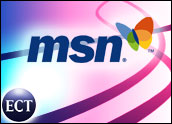
When it comes to outsourcing customer service tools, some companies have found it difficult to get a positive return on investment.
Indeed, cross-channel customers who use the Web and phone independently have posed problems for firms: They drive up service costs, are harder to satisfy, and can’t be tracked by revenue or customer experience analytics very well, according to a May 2005 report from Forrester Research entitled “Click-To-Callback Bridges The Cross-Channel Gap.”
But a new breed of companies is emerging with measurable results that go straight to the bottom line. Forrester reports companies that leverage click-to-callback for a Web-to-agent bridge have a clear advantage over VoIP and chat because it boosts cross-channel conversion rates, balances customer value and call center load, ensures continuity of experience, and is traceable.
EStara has been preaching this same gospel for years. The company’s Push to Talk service is one of the most widely deployed “click to call” services in the world with over 3 million users in 113 countries. Companies like Amazon.com’s A9 Yellow Pages, Verizon SuperPages, Dell Financial Services and Einsurance.com tap into eStara’s solutions to get measurable results.
The E-Commerce Times got in touch with eStara Chief Operating Officer John Piescik to discuss the biggest customer communication mistakes e-commerce sites make, how click-to-call solutions can help bridge the gap, and what to look for in a vendor.
E-Commerce Times: What do you see as the biggest mistakes e-commerce sites aremaking when it comes to communicating with their customers?
John Piescik: By far the biggest mistake is failing to systematically maximize sales conversions. Conversion rates from e-commerce sites average about 5 percent across industries. Can you imagine retail stores where 19 out of 20 customers left without buying and no one ever asked them what they were looking for?
The best sites, like Continental Airlines, look for people who have been browsing and are most likely to make a purchase, but haven’t done it, and offer them a chance to talk to someone who can help. In the process, they pick up incremental sales. Because overall conversions are so low on average, even a one-half percent increase in the absolute conversion rate can translate into a 10 percent increase in sales from an e-commerce site.
There’s a number of ways to engage prospects before they leave the site — ranging from surveys to text chat to live telephone interaction. For selling purposes, the best approach by far is the live telephone interaction, which is our specialty at eStara.
ECT: Why is it so important to get customers on the phone? Won’t e-mail suffice?
Piescik: Most people are just more comfortable talking to someone on the phone when they have a question and are about to spend their hard-earned money. Jupiter Research estimates that the vast majority of online shoppers who spend more than $500 in a 6-month timeframe would much rather speak to someone when they have a service issue. Of course, some transactions have low values and some companies have low lifetime values per customer, but even in those cases cheap solutions like FAQs, e-mail and text chat support are better than nothing.
ECT: Your company develops customer-centric VoIP applications. Can you explain what you mean by that? How does that differ from click-to-call solutions of a few years ago?
Piescik: We do more than just connect calls. We empower businesses to strategically engage their customers so that they can in turn increase sales conversions, reduce Web site abandonment and improve customer loyalty. We can synchronize Web sessions with voice conversations so that agents can communicate with callers using both visual and auditory communication. We provide real-time reporting tools that allow e-commerce sites to really understand their customers, and the instant feedback they get enables them to improve their sites and reduce the number of problems customersencounter.
ECT: How does click-to-call solve cross-channel communications challenges?
Piescik: Click to call helps companies avoid the informational black hole of traditional toll-free numbers. If you simply put an 800 number on your site you’re losing customer information; there’s no way for you to tell where the customer was on your site and have an idea of their “pain points” in order to route their call and best help them.
With eStara’s Push to Talk service, your customer service representative can see at what point in the transaction process the customer started having trouble and decided to call instead of completing the transaction online. After action, you then have the data to properly credit both the Web site and your call center with helping to make the sale. There is tremendous synergy between Web sites and call centers when everyone focuses on maximizing sales conversions.
ECT: Does your technology have any ancillary benefits? What is the value beyond the typical customer service function where a customer visits the site and wants to call the vendor?
Piescik: Don’t sell the interactive sessions short — they are incredibly valuable in increasing sales — but yes, we offer more. Our mission is helping companies increase conversion rates from both their sales and marketing investments.
In the online world, we do that with Push to Talk sessions which help make the immediate sale, and then with all the data that those sessions generate for our clients that enable them to improve their sites. In the offline world, we also provide call tracking services that let enterprises measure the effectiveness of their various advertising initiatives and we can, of course, cross-reference this data to show the crossover from one channel to another.
ECT: Why have companies in the past found it so difficult to get a return on investment when outsourcing CRM tools?
Piescik: First you have to set goals and then measure results against them. Many “traditional” CRM tools have been passive, in the sense that while they improved the management of customer interactions they didn’t create new interactions.
ECT: How can companies measure the ROI on a click-to-call tool?
Piescik: We focus on conversion rates — how many incremental sales get made every month? For major enterprises the results are usually quite impressive. Companies also like to measure traffic, but that isn’t the best measure because a well run Web site won’t generate tons of customers who need help — but it really pays to identify and work with the few who do.
ECT: Do you expect the landscape for click to call type services to grow? What are the driving factors?
Piescik: Absolutely we expect the demand to increase. We are seeing the market expand from the “early adopters” to more of the “early majority” customers — they demand proof of ROI and require far more due diligence than early adopters, but with the proof points now well established we are making the sales.
ECT: What should customers look for in a click to call vendor? And what should they beware of?
Piescik: Look for a partner with a track record delivering ROI for name brand companies. If you are a multinational, look for a global footprint and multilingual capabilities. Watch out for single points of failure (like big centralized switches) — insist on globally distributed networks.
ECT: What does it cost to get into this type of click-to-call solution?
Piescik: The answer depends on the scope of the solution and the amount of traffic generated. We have implementations that range from a few thousand dollars a month to about US$1 million a year. What they all have in common is that the benefits far outweigh the cost. Remember, small changes in conversion rates translate into major gains in sales.






















































Social Media
See all Social Media